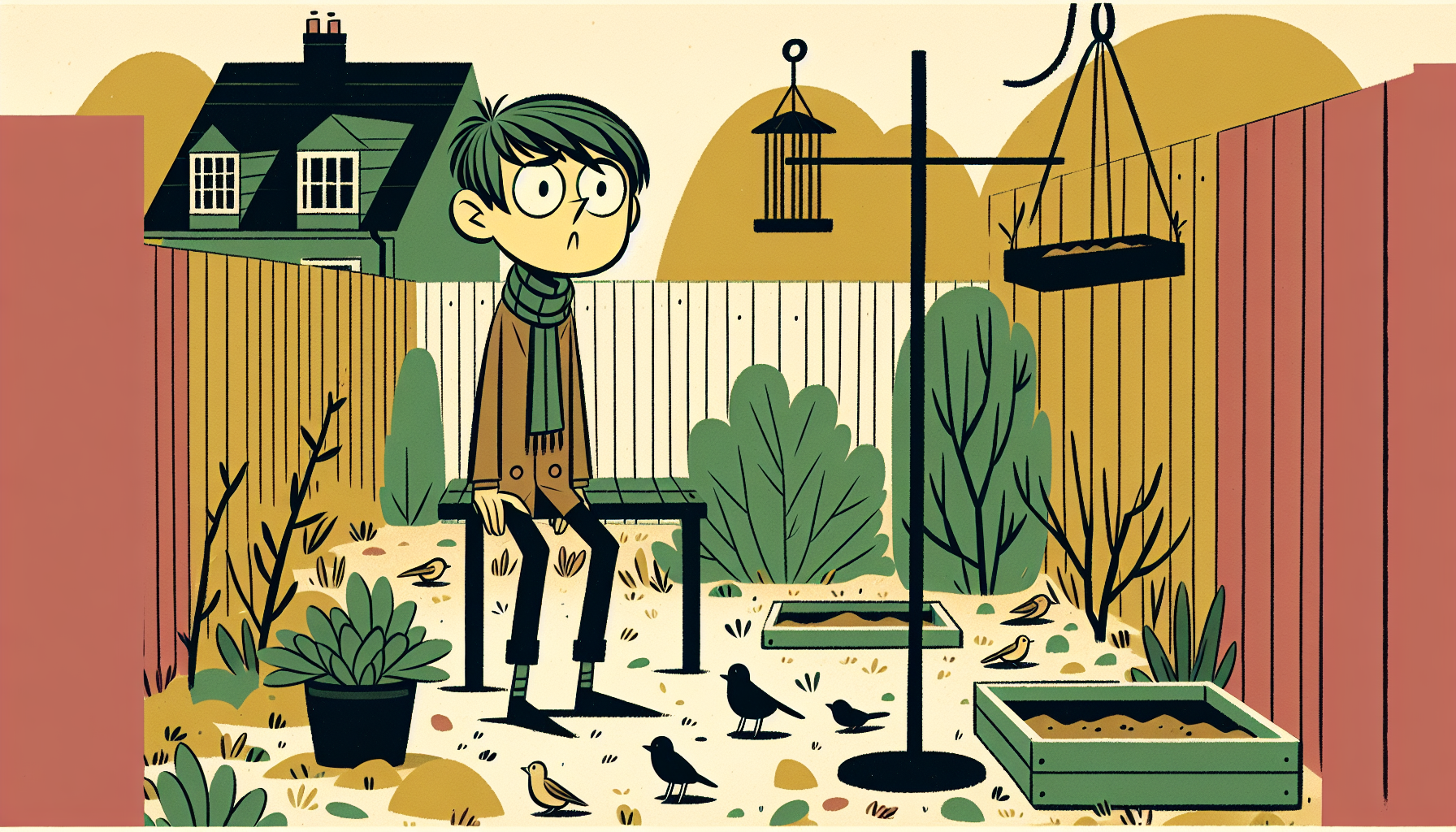
Bird-friendly garden: the best plants for a bird paradise
A bird-friendly garden combines natural design with biodiversity - and turns your home into a lively retreat for blackbirds, titmice and the like. But which plants attract the most birds to the garden? And how can you ensure that your feathered guests feel at home all year round? In this article, you will find out which native plant species are particularly suitable, how you can combine protection and food in the garden and which techniques you can use to observe birds without disturbing them. How to create your own personal bird paradise - sustainable, close to nature and technically sophisticated.
Plants that attract birds: how to create an animal-friendly garden

Birds need more than just a feeder to enjoy spending time in the garden. Diverse plants that offer food, create hiding places and can replace natural nesting sites are also crucial.
Plants with berries or seeds such as elderberry, hawthorn or sunflowers provide important energy - in winter for blackbirds, for example, and in spring for starlings or finches. Native woody plants such as blackthorn or cornelian cherry also score with added value: they flower early, attract insects and are both a breeding ground and a protected zone.
A structured garden design is ideal: ground cover, perennials, shrubs and small trees create tiers that are suitable for different bird species. Wrens feel just as at home as green woodpeckers or robins.
The best native plants for the bird garden
Many ornamental plants look decorative, but have little ecological benefit. For gardens with real benefits for birds, native species that bear berries or encourage insects are particularly important.
Shrubs and woody plants with a feeding function
- Hawthorn: Provides protection from thorns, berries in the fall and dense growth for nests
- Elderberry: Popular with blackbirds, offers fruit and numerous insects as a source of food
- Rowan (mountain ash): Attracts waxwings, thrushes and bullfinches, among others
- Cornelian cherry: Early bloomer with high ecological importance
- Dog rose: Beautiful flowers in summer, abundant rose hips in winter
Avoid popular but useless plants such as forsythia or cherry laurel - they may look neat, but they provide neither food nor nesting opportunities for birds.
Flowering plants for insects - and therefore for birds
- Sunflower: seed supplier for goldfinches and sparrows
- Wild carrot, viper's bugloss, meadow sage: attract insects for young birds
- Knapweed and daisy: encourage butterflies and aphids as food
- Lavender: Fragrant, insect-friendly and suitable as a natural mosquito repellent
Cut back perennials late in the fall. The seed heads serve as food for birds in winter - including chaffinches, siskins and goldfinches.
Keep an eye on the seasons: Plants and bird behavior in the rhythm of nature
A bird-friendly garden offers food and shelter all year round. The choice of plants should therefore be based on the needs of the birds as the seasons change.
Spring and breeding season (March to July)
At this time of year, birds are primarily looking for structurally rich, quiet nesting sites. Shrubs such as privet, sea buckthorn or blackthorn offer protection from predators, an abundance of insects and denser vegetation for safe nests.
Ideally, plant shrubs in the fall - they can take root well until spring. Avoid heavy pruning during the breeding season: according to the Federal Nature Conservation Act (§39), hedge and tree pruning is prohibited from March onwards.
Further information on this topic is available from NABU: Bird protection in the garden
Fall and winter: Securing energy reserves
Fruit bushes such as sea buckthorn, barberry or snowball are an important survival aid for garden birds. Their berries contain vitamins and are frost-resistant.
Sunflowers, thistles and cornflowers can also provide seeds into January - provided they are not cut off. In addition, species-appropriate winter feeding with hygienically maintained feeding stations helps.
Observe birds: Stress-free and up close with technology
Motion detectors, weatherproof cameras or WLAN feeding stations make it easier to observe garden birds - without disturbing them. Modern technology creates new opportunities for amateur ornithologists, even in small terraced gardens.
Recommended camera systems
- Weatherproof (IP65 or better)
- With infrared for night shots
- Live view and storage via WLAN/Cloud/App
Position the technology as sheltered from the wind and in the shade as possible. Ideally, it should be installed near quiet feeding stations or nesting boxes - this allows you to observe the birds' behavior up close.
Electricity and networking in the garden
You need a stable power supply for camera and sensor technology. Outdoor sockets with timers or solar modules help with installation without a mains connection.
You can secure the WLAN connection at a distance with repeaters or outdoor access points. This means that even remote garden areas can be reliably networked.
A tip for families: Many systems can be linked with motion detection or time lapse. These save videos automatically - and make the experiences shareable.
Tips, mistakes and legal requirements for bird-friendly gardening
A natural garden does not mean "neglected". If you want to help birds, adapt your planting plan to the location, seasons and legal framework.
Site selection and care
Birds avoid noisy or unprotected areas. Do not plant food suppliers such as berry bushes directly next to patios, barbecue areas or playground equipment. Semi-shaded zones in the east or areas protected from the wind by hedges are ideal.
The soil is also important. Drought-tolerant plants work better in sandy soils, while heavy clay soils require waterlogging - drainage is important here. Specialist dealers and regional nurseries can provide individual advice.
Avoid unsuitable or harmful plants
Bird-unfriendly species such as cherry laurel, thuja or forsythia are easy to care for, but do not provide food or nesting sites. They are considered "ecological deserts".
Invasive species such as summer lilacs are also critical: despite being visited by butterflies, they displace native plants. Replace such plants with ecologically sound alternatives.
You can find sources for native plants via the VWW network, for example: VWW sources for wild plants
Conclusion: Create a living bird paradise with native plants
A bird-friendly garden is based on a combination of near-natural planting, protected retreats and an awareness of wildlife. You can create a year-round home for native birds with species-rich plants, a structure-rich layout and minimal maintenance.
Technology such as weatherproof cameras or smart feeding stations make the nature experience convenient. Observe your guests without disturbance and help them through all seasons.
Now it's up to you: Design your garden to be bird-friendly - with the right plants, a little patience and the joy of small natural wonders.
FAQ: Frequently asked questions
Which plant species attract particularly large numbers of birds?
Native shrubs such as elderberry, hawthorn or cornelian cherry provide fruit and shelter. Perennials such as sunflowers or sage encourage insects and provide food for insectivores.
When is the best time to plant bird-friendly shrubs?
Ideally in the fall between October and November. This way, the plants remain protected over winter and sprout early in spring.
How can birds be observed without disturbing them?
With weatherproof WLAN cameras or discreetly placed observation stations. Important: keep your distance and integrate technology sensibly in the garden.
What mistakes should be avoided when creating a bird garden?
Avoid exotic or sterile plants, no heavy pruning during the breeding season, no chemicals - these disrupt the sensitive ecosystem.
Are there any legal requirements for pruning hedges or trees?
Yes, radical pruning is prohibited between March 1 and September 30 according to the Federal Nature Conservation Act (§39 BNatSchG) in order to protect nesting birds.
